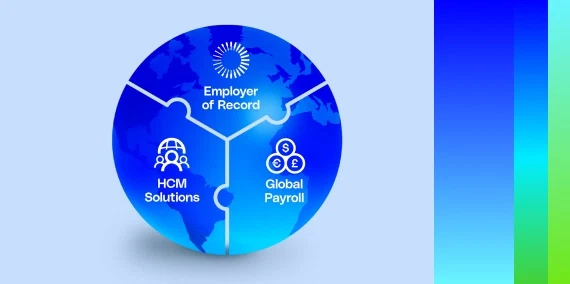In 2022, technology has concretely intertwined its way into our everyday lives. While the pandemic has been a terribly conflicting and uncertain time, it has proven an opportune accelerant for the tech industry. The uniform and high-speed digitization has had an instantaneous effect on various sectors, such as healthcare, insurance, education, retail, and food delivery, making us rely on core and fringe technologies more than ever.
Generally speaking, this steep change in our day-to-day lives happened practically overnight. Not only can we now shop, order food, buy insurance, take classes, or stream the latest movie releases from our home, but we can also work remotely.
So, following the rapid growth and transformation catalyzed by the pandemic, where does that leave the tech sector of Europe, the Middle East, and Africa (EMEA)? Let’s explore.
Is Europe falling behind in tech?
Although the European Union is the world’s third-largest economy, it is not viewed as a leader in the tech sector today. For instance, Europe is home to only 13 percent of the world’s tech unicorns, which are startups that have a market valuation of over USD 1 billion.
Additionally, no Europe-based company made the top 10 of Boston Consulting Group’s annual report on innovative companies — Siemens was the highest at 11. Critical to this is the lack of research and development (R&D) expenditure. The EU bloc trails behind Japan, South Korea, and the U.S. regarding tech spending.
For one reason or another, the result is that Europe has fallen notably behind the U.S. and China in creating technology giants, but things weren’t always this way. Before buckling to increased competition, the continent once led the mobile phone market through Finland’s Nokia and saw Estonia’s Skype dominate the video-messaging market.
Why can’t Europe innovate?
When measured against their return on invested capital, Europe-based companies’ competitiveness drastically reduces. A report by McKinsey examining the period of 2014-2019 found Europe-based tech companies to be 20 percent less profitable. Their revenue also grew 40 percent slower, and they spent 40 percent less money on R&D.
Aside from a lack of R&D expenditure, unfortunate challenges have wounded the European technology market. The continent is constricted by a diverse language pool, different payment methods, and varying regulations across the bloc. The fragmentation between EU member states presents a considerable hurdle for companies to overcome.
The EU has a common market for physical goods. This contributed to Nokia becoming an early mobile phone industry giant. However, the continent doesn’t have a corresponding market for services, hindering the software industry.
Today, smartphones and the digital economy are, naturally, all about software, not hardware, as they once were when Nokia came around. Thus, the EU loses momentum against this stumbling block. While the EU has over 500 million citizens, the various language barriers obstruct capturing this audience as a whole.
While companies from the U.S. or China are allowed to build extreme debt to prioritize growth, Europe-based tech companies take a different approach. They’re prone to focus on revenue and profits from the start. This creates an expected pathway to success where Europe-based companies end up submitting to takeovers. For instance, when Microsoft bought out Skype for EUR 7.6 billion.
Where are the tech hotspots in Europe?
Between 2015 and 2020, the number of Europe-based startups soared from about 1,850 to almost 6,600, according to Statista. And 2021 was better yet, delivering a record USD 100 billion capital investment and 100 new unicorns. Meanwhile, the fastest-growing tech companies in Europe for 2022 have leveraged the incidental effects of the pandemic.
These include the Finnish sustainability company Swappie, the Lithuanian digital healthcare company KiloHealth, and UK-based supply chain specialist OCI Group. Then there are well-fortified tech companies like SAP, Spotify, and Revolut to illuminate optimism.
The Netherlands, on the other hand, has over 2.5 times as many startups as the European average. According to new research, London is home to 76,660 digital technology companies and has been listed as the second best tech startup center after Silicon Valley. The city was also ranked the leading global hub for fintech.
Finally, a 2022 Financial Times and Statista report stated that during the last two, years Italy has had the fastest-growing companies in Europe.
The Middle East tech boom
The Middle East is seen as one of the globe’s rapidly growing tech sectors. Government initiatives and investments are triggering digitization efforts in e-commerce, education, and fintech across the region. For instance, excluding Israel, data shows that investments in tech companies in the Middle East quadrupled to USD 2.87 billion in 2021.
More than half of this money was injected into the UAE. Government spending in the Middle East signals that they wish to be at the helm of AI technology. The UAE even appointed its first minister of AI and also plans to train 20,000 data and AI specialists by the decade’s end. Türkiye, on the other hand, has published a national AI strategy. This ambitious project aims to train AI experts to increase employment in the domain. This will see the government bring AI’s contribution to GDP to 5 percent and create 50,000 AI jobs by 2025.
Elsewhere, Saudi Arabia expects AI to contribute over USD 135.2 billion to the economy by 2030, equivalent to 12.4 percent of GDP.
Another country expanding its tech footprint is Israel — the nation cracked the top 10 of the Global Finance rankings for national technical strength. The rankings are based on metrics like internet availability, preparedness for developing new technologies, and the percentage of GDP that a country spends on R&D. Key to Israel’s high rank is its R&D investment and a recent boom in tech startups that have positively impacted growth in the public and private sectors.
Africa’s current tech explosion
Many African countries benefit from a young, tech-literate population, and the cost efficiency of investing in their continent. Because of this, the latest Africa Wealth Report from April 2022 predicts that exceptional technology advances and an emerging business class can kick-start a 38 percent jump in total private wealth within the next decade.
The inaugural fDi Africa Tech Ecosystems of the Future rankings saw South Africa top the polls. However, Nigeria beat all locations for the number of startups. Meanwhile, Kenya had the highest number of coding schools on the continent. Morocco ranked top with the best technological infrastructure from download speed to network readiness.
Access to smartphones and internet connection is quickly improving across Africa. The rise in fiber-optic cable usage across the continent generates a whole new set of opportunities.
For instance, two years ago, Meta announced they would be building a 37,000-kilometre-long undersea cable around the continent to improve the region’s internet access. Estimates show that around three-quarters of Africans will have access to the internet by 2030, compared to only 22 percent in 2020.
How big is the fintech market in Africa?
Of all the tech sectors influencing the future of the African economy, fintech is by far the market leader. According to KPMG, 2020 saw 65 venture capital investments worth USD 106 million. In 2021, that number of assets rose to 75, at a value of USD 1 billion.
By June 2022, the number of investments was at 31 and worth USD 547 million – already on track to abruptly break 2021’s record year. The reason that fintech is so ripe for investment in Africa is because the continent has one of the most significant unbanked populations in the world.
For instance, according to IMF data from 2017:
- Only 48 percent of men in the Sub-Sahara region have a bank account.
- Thirty-seven percent of women in the Sub-Sahara have a bank account.
- About two-thirds of the adult population in North Africa remains unbanked, and the gender gap for access to finance is one of the largest in the world.
Undoubtedly, this has opened up genuine possibilities for continuous investment in fintech that allows for the transfer and payment of money while bypassing the traditional banking infrastructure.
Hiring tech talent in 2022
As the tech sector continues to evolve across Europe, the Middle East, and Africa, identifying tech professionals’ needs will be crucial to help companies expand. In this new era of work, talent searches are no longer limited to local markets. However, a successful talent acquisition strategy is needed to prevent tech companies from running into unnecessary roadblocks during the global hiring process. Companies must be aware that hiring talent across international jurisdictions often involves several challenges and complexities, including managing tax, payroll, compliance, and local employment laws.
Fortunately, technological advancements allow companies to venture into global talent pools and recruit highly skilled professionals from anywhere in the world. G-P Recruit enables companies to quickly identify and hire new team members in key locations globally through our market-leading Global Growth Platform™. Manage your entire HR process, from recruitment and onboarding to compliant payroll setup and offboarding – all with one platform. Learn more about G-P Recruit today.







